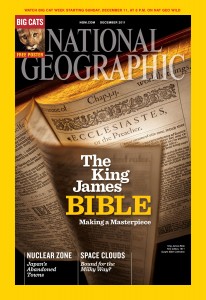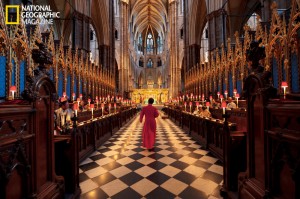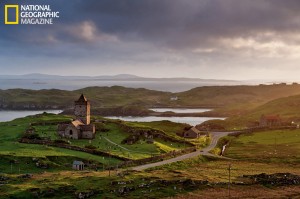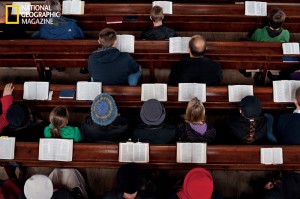The Bible of King James: National Geographic

- © Jim Richardson/National Geographic
But by the mid-1600s the King James had effectively replaced all its predecessors and had come to be the Bible of the English-speaking world. As English traders and colonists spread across the Atlantic and to Africa and the Indian subcontinent, the King James Bible went with them. It became embedded in the substance of empire, used as wrapping paper for cigars, medicine, sweetmeats, and rifle cartridges and eventually marketed as “the book your Emperor reads.” Medicine sent to English children during the Indian Mutiny in 1857 was folded up in paper printed with the words of Isaiah 51 verse 12: “I, even I, am he that comforteth you.” Bible societies in Britain and America distributed King James Bibles across the world, the London-based British and Foreign Bible Society alone shipping more than a hundred million copies in the 80 years after it was founded in 1804.
The King James Bible became an emblem of continuity. U.S. Presidents from Washington to Obama have used it to swear their oath of office (Obama using Lincoln’s copy, others, Washington’s). Its language penetrated deep into English-speaking consciousness so that the Gettysburg Address, Moby Dick, and the sermons and speeches of Martin Luther King are all descendants of the language of the English translators.
But there was a dark side to this Bible’s all-conquering story. Throughout its history it has been used and manipulated, good and bad alike selecting passages for their different ends. Much of its text is about freedom, grace, and redemption, but those parts are matched by an equally fierce insistence on vengeance and control. As the Bible of empire, it was also the Bible of slavery, and as such it continues to occupy an intricately ambivalent place in the postcolonial world.

For a thousand years, music and ceremony have celebrated the Christian Gospel in Westminster Abbey in London. As the place where generations of English kings and queens have been married, crowned, and buried, this great medieval building embodied King James’s cherished fusion of glory and regal authority—a visual and aural richness of which the new Bible was to be an integral part.

The 15th-century church of Rodel on the Isle of Lewis, built for the warlike chiefs of the MacLeods, towers over the sea lochs of Scotland’s Outer Hebrides. Nothing in early modern Britain, from its cities to its remotest corners, was more political than religion. The church in every parish—nearly always the most imposing building—was as much a symbol of worldly control as a shrine to God.

It’s a midweek Prayer Meeting in the Church of Scotland at Leurbost on the Isle of Lewis in the Outer Hebrides. No image, not even a cross, is allowed in the church. The word rules alone.